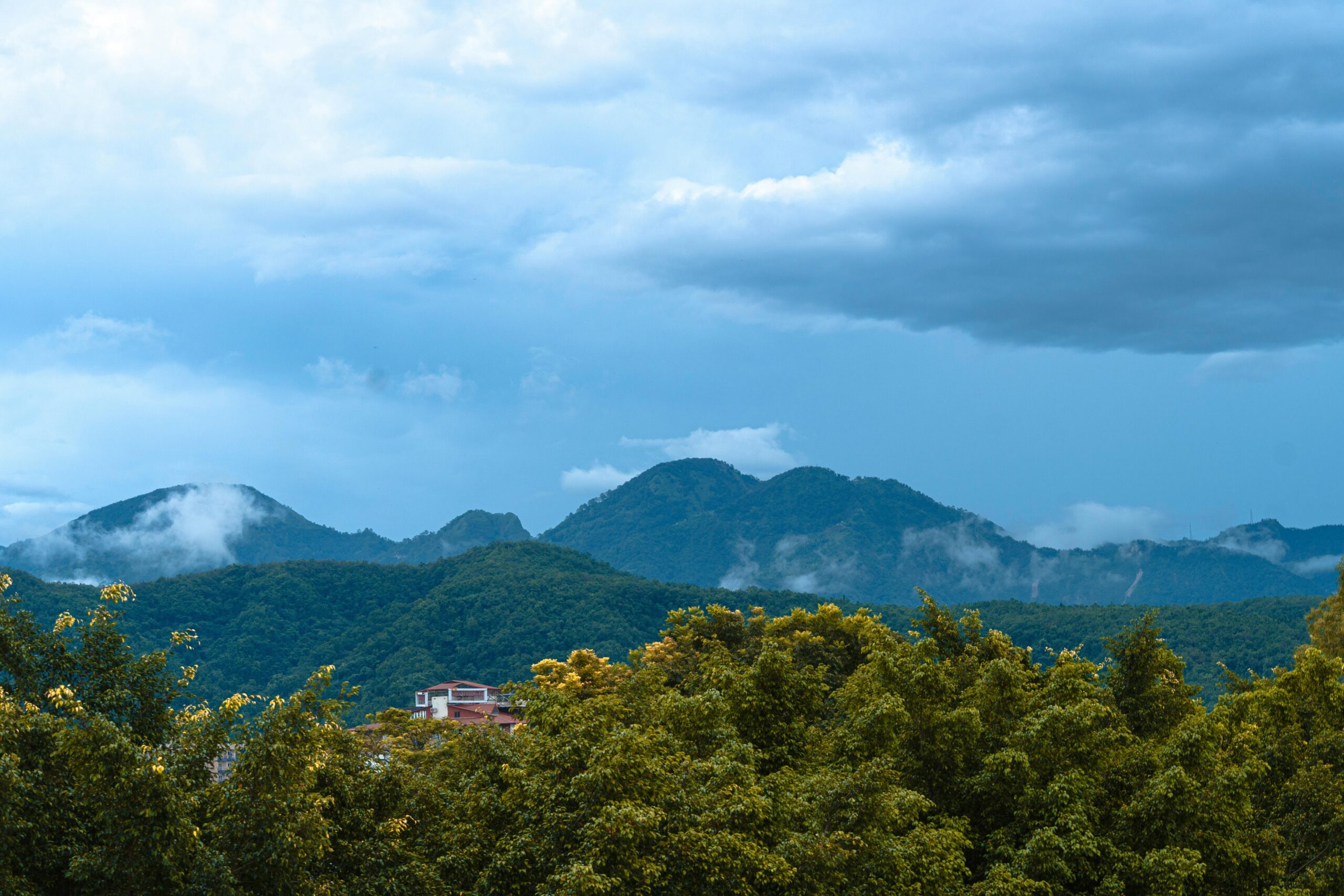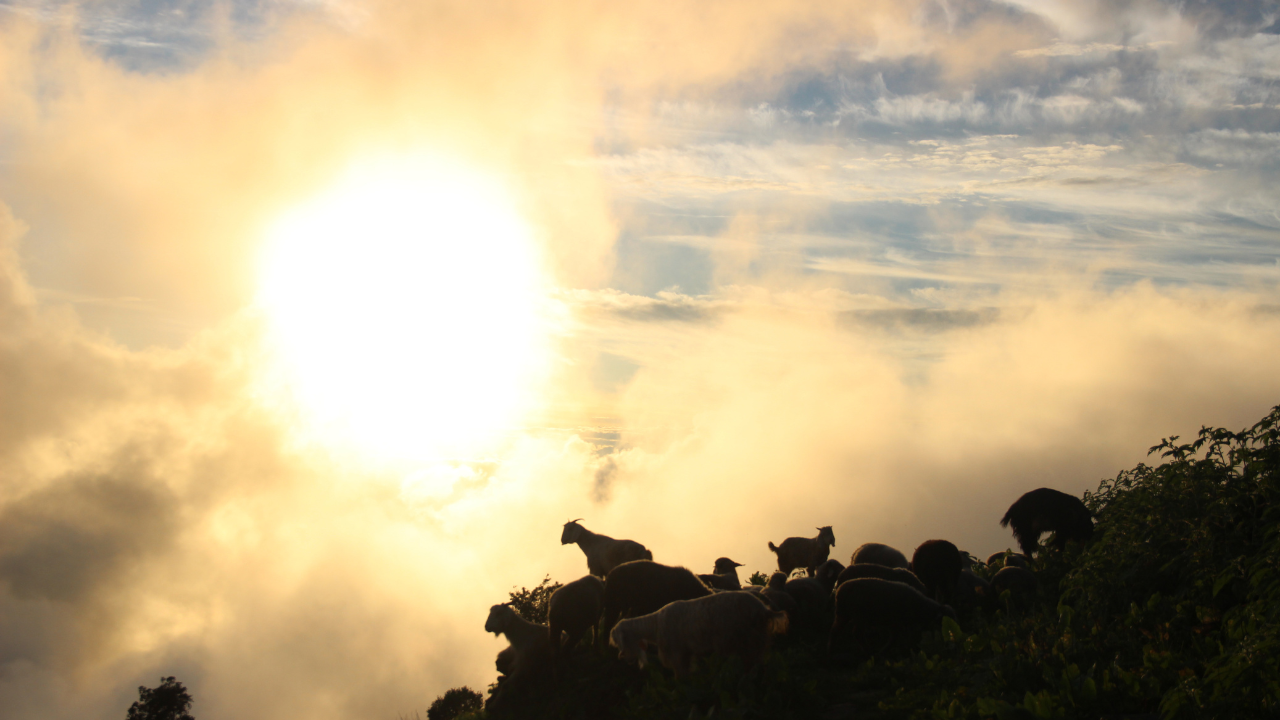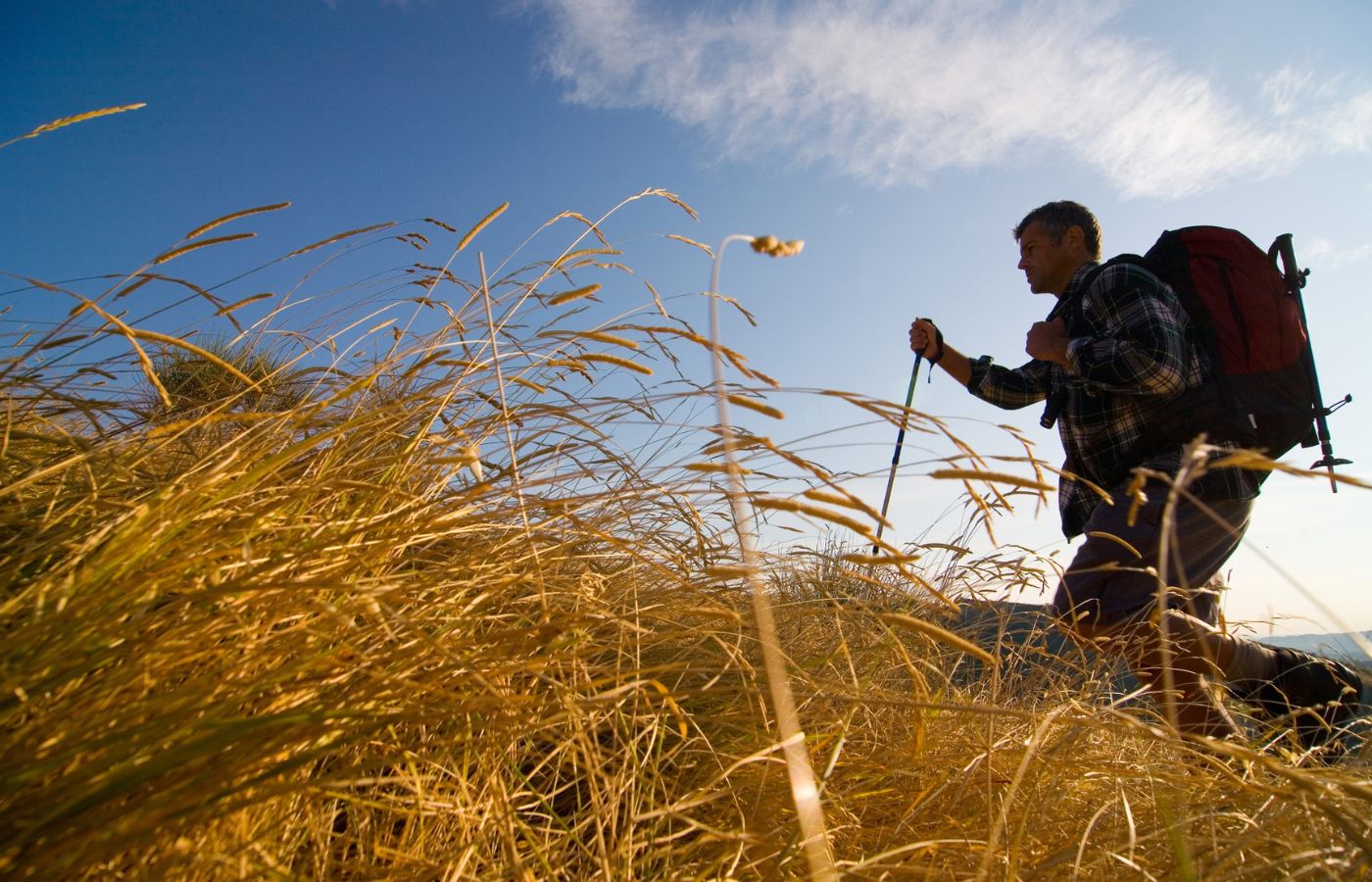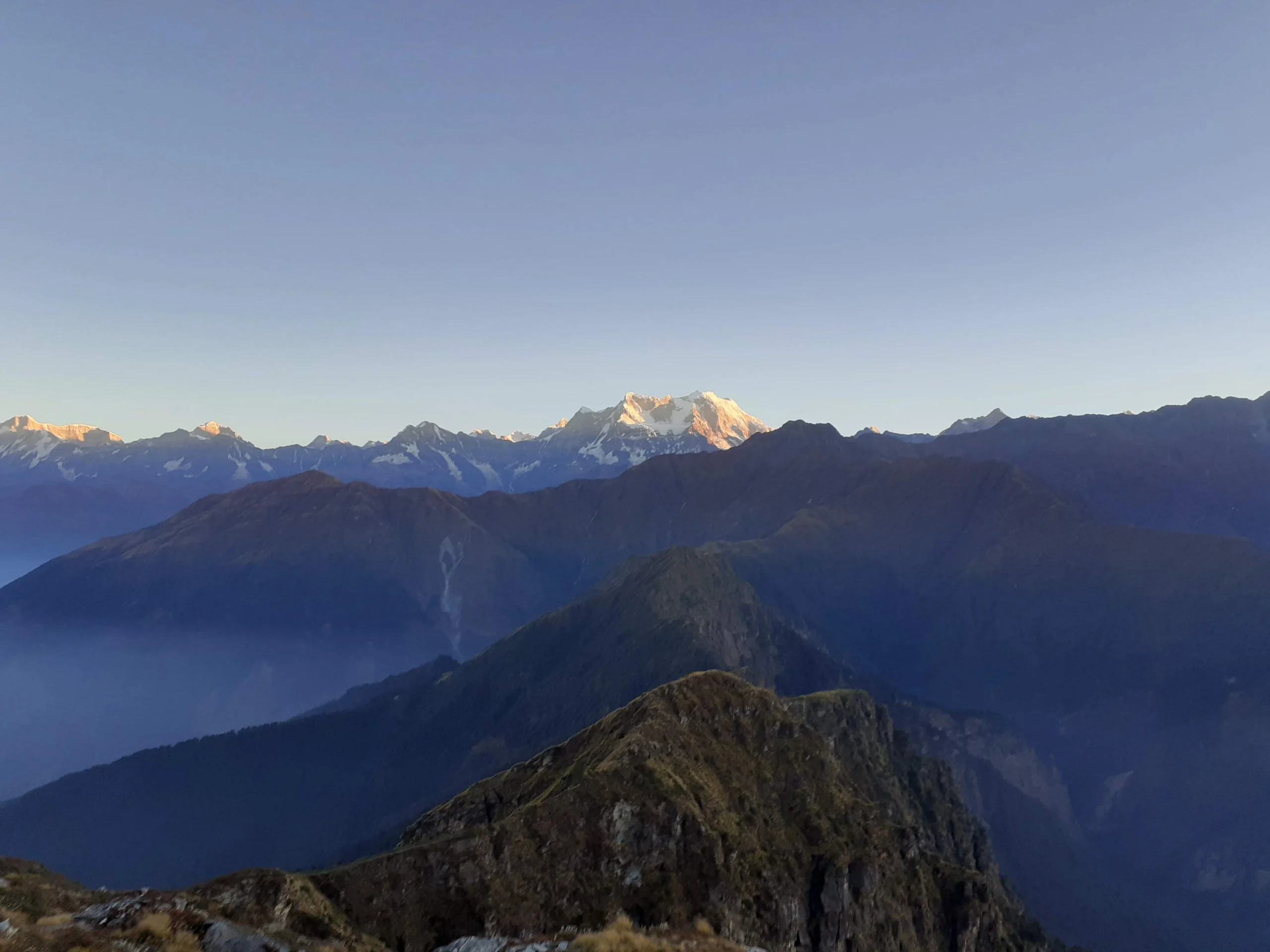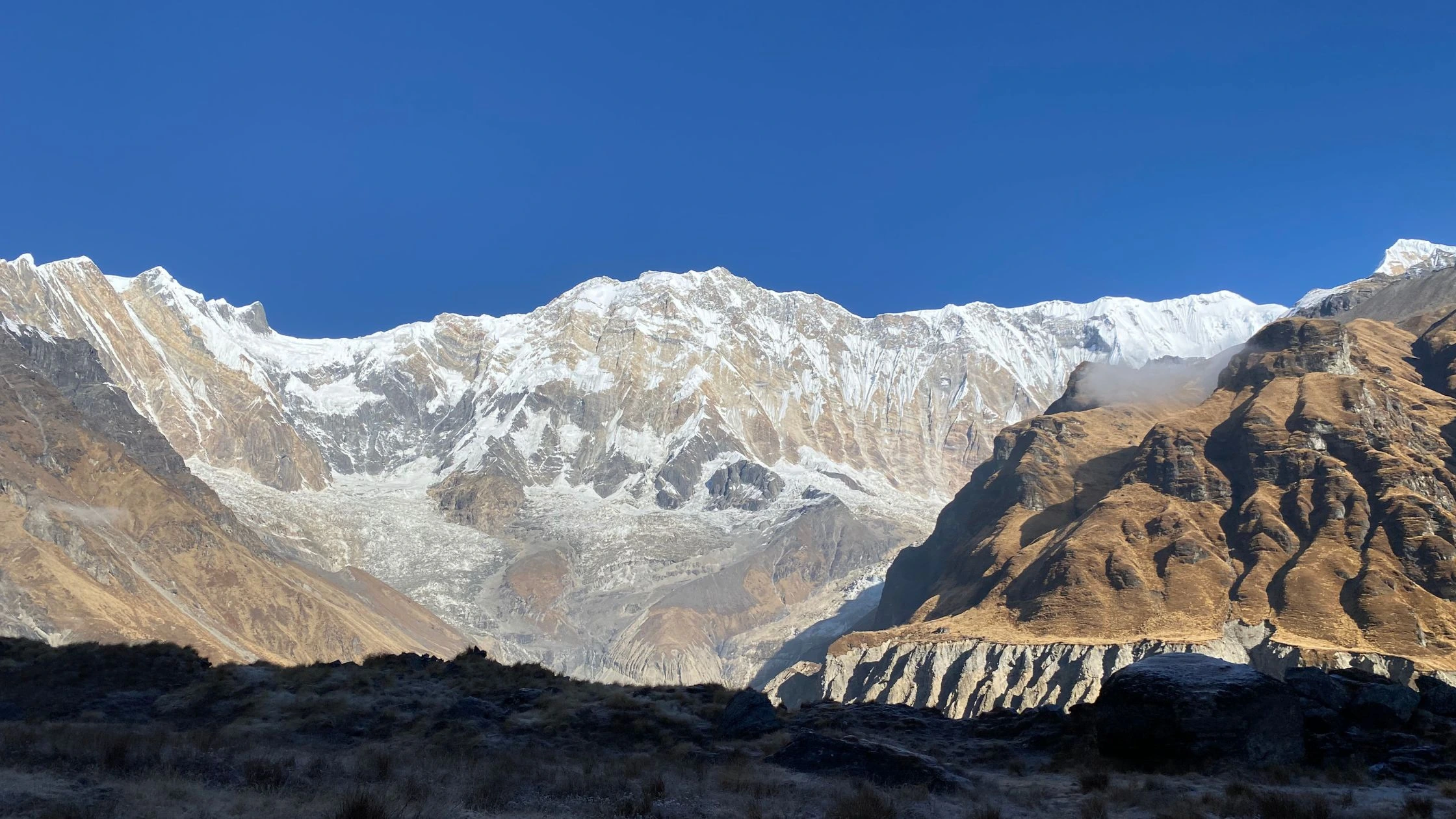Towering at 7,816 meters, Nanda Devi is not just India’s second-highest peak but a revered deity in the hearts of the people of Uttarakhand. Her name translates to “Bliss-Giving Goddess,” and she embodies the spiritual essence of the Garhwal and Kumaon regions.
To locals, she is a divine protector, a daughter, and a queen, whose presence is deeply interwoven into their daily lives and traditions.
Who is Nanda Devi?
In the heart of the Garhwal Himalayas, locals revere Nanda Devi. She is believed to be an incarnation of Parvati, the consort of Lord Shiva. The name “Nanda” translates to joy or bliss, and the goddess Nanda is considered the patron deity of the Kumaon and Garhwal regions.
But the devotion goes even deeper. For centuries, villagers have told the tale of Nanda Devi as a princess who fled her forced marriage to a demon king. She sought refuge in the mountains, the very peak we now call by her name. These hills, blanketed in snow and mystery, became her eternal sanctuary. That’s why Nanda Devi is considered untouchable, sacred, and fiercely protected.
Where Is Nanda Devi?
Nanda Devi sits at the heart of the Garhwal Himalayas in the state of Uttarakhand, India. She’s cradled within the Nanda Devi Biosphere Reserve, a UNESCO World Heritage Site – Valley Of Flowers, that stretches across the Chamoli district.
What makes her location even more mystical is the natural fortress that surrounds her, a ring of high mountains known as the Nanda Devi Sanctuary. It’s a secluded amphitheater of snow, rock, and sheer silence. Getting there isn’t easy, and perhaps that’s the point. The mountain chooses who sees her, not the other way around.
The Landscape
The area around Nanda Devi is like nature’s version of a temple complex with dense deodar forests, alpine meadows, crystal-clear streams, and glacial ridges. It’s wild, untouched, and awe-inspiring.
You’ll also find sacred rivers like the Rishi Ganga and Dhauli Ganga winding their way down her slopes. These are no ordinary rivers, they’re seen as veins of the goddess, carrying her spirit to the people below.
Weather
If Nanda Devi had a personality, her weather would reflect it perfectly: unpredictable, majestic, and humbling.
- Summer (May to June): This is the most accessible time to see the surrounding regions. Skies are relatively clear, and temperatures hover between 12°C to 20°C. The meadows start to bloom, and the trail towards Valley of Flowers comes alive.
- Monsoon (July to September): The entire area becomes a dramatic canvas of mist, rain, and landslides. Travel is discouraged, but locals believe the goddess is in deep meditation during this season.
- Autumn (October to early November): The post-monsoon air is crisp and the skies crystal clear. It’s one of the best times to witness her snow-draped crown.
- Winter (Late November to April): The sanctuary is cloaked in heavy snow. Harsh winds sweep across the valleys, and the temperature often falls below freezing. It’s a time of stillness. A deep, holy silence falls over her slopes, almost as if she’s drawing inward.
Why the Weather Matters Spiritually
For locals and pilgrims, the weather around Nanda Devi is a message. A storm isn’t just a natural event, it’s a sign she may not want visitors right now. A clear day? A blessing. People often pause, pray, and wait for signs from the mountain herself before making any journey toward her.
The Mythical Ban
You might be surprised to know that climbing Nanda Devi is now forbidden. In fact, the inner sanctuary of the Nanda Devi Biosphere Reserve has been closed to trekkers and climbers since 1983. Why? Part of the reason is ecological, it’s done to protect the fragile alpine ecosystem, but locals believe it’s also spiritual.
There’s an unspoken reverence around her. The silence is cultural. For the people here, this is more than a mountain. It’s a living goddess, and she doesn’t want to be disturbed.
The Nanda Devi Raj Jat Yatra
Once every 12 years, the faith and devotion to Nanda Devi unfold in a dramatic way. The Nanda Devi Raj Jat Yatra, a 280-km pilgrimage, retraces the steps of Nanda Devi’s legendary journey through the high Himalayan meadows to her home. The yatra lasts 3 weeks and brings together thousands of villagers, sadhus, and devotees. A four-horned ram (believed to be sent by the goddess) leads the way.
It’s a sacred send-off, a symbolic wedding procession and farewell to a goddess who chose the mountains over the world.
Where Myth And Mystery
Add to all this a dash of mystery: back in the 1960s, Nanda Devi’s inner sanctuary became the site of a top-secret nuclear surveillance mission by the CIA and Indian intelligence, who placed a plutonium-powered device on the mountain to spy on China. The mission failed, the device was lost in an avalanche, and today, the mystery of its whereabouts still lingers.
Roopkund Lake: The Lake of Skeletons
Along the yatra route lies Roopkund Lake, also known as the Skeleton Lake. Discovered in 1942, the lake contains hundreds of ancient human skeletons, visible when the snow melts. Scientific studies suggest that these remains date back to the 9th century, with some theories attributing their deaths to a sudden hailstorm.
Local folklore, however, tells a different story. It speaks of a king and his entourage who, during a pilgrimage to honor Nanda Devi, violated the sanctity of the journey by indulging in inappropriate festivities. Angered by this disrespect, the goddess unleashed a storm, leading to their demise. This tale serves as a reminder of the importance of reverence and humility in spiritual pursuits.
Cultural Significance
Nanda Devi’s influence extends beyond religious practices; she is an integral part of the cultural fabric of Uttarakhand. Annual fairs, songs, dances, and rituals celebrate her, reinforcing her presence in the daily lives of the people.
She is not just worshipped in temples but also in homes, where she is considered a family member, a protector, and a source of inspiration.
Conclusion
Nanda Devi stands as a symbol of spiritual purity, resilience, and the profound connection between nature and divinity. Her stories, the sacred yatra, and the reverence she commands reflect a deep-rooted belief system that honors the harmony between humans and the natural world.
In an era where such connections are increasingly rare, Nanda Devi remains a beacon of spiritual and cultural unity.
If you are looking for vibrant experience in the himalayas connect with: mountainiax
Also check out our blog on – A Sacred Journey to Hemkund Sahib.


